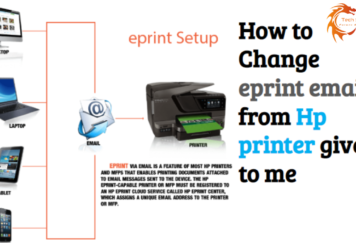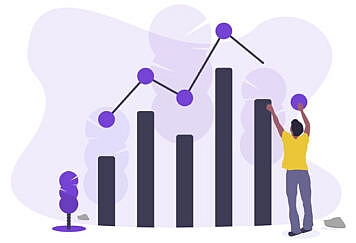Digital data is abundant nowadays, especially with the rise of image and video-based applications. Data annotation describes manually adding relevant information to this massive amount of digital data.
This allows both humans and machines to make sense of raw data, essential for most modern computer vision tasks such as object recognition or semantic segmentation. Furthermore, it can significantly reduce the time experts spend reviewing these datasets manually, thus saving substantial money in human labor costs.
The term “annotation” covers a wide range of possible ways to add annotations to an image dataset:
- Everything from simply indicating where objects are located within images.
- All the way up to more complex operations, including labeling object classes.
- Transcribing text.
- Performing optical character recognition (OCR).
Different annotation tasks require different levels of expertise and can be more or less time-consuming to carry out.
This article will discuss the differences between in-house and outsourced data annotation projects. We will outline the pros and cons of each approach and guide which option might be best suited for your specific needs.
What Types of Data Annotations are Possible?
Image Data Annotations
Many possible annotations can be made to digital data sets. This section will look at some of the most common ones.
2D Box Annotation: This annotation type involves drawing a box around an object within an image. It is usually performed manually and can be used for various applications such as semantic segmentation or landmark detection/pose estimation.
Due to the simplicity of this annotation task, it usually takes relatively little time and is hence more cost-effective than most other types of data annotations.
3D Bounding Box Annotation: This type of annotation involves drawing a box around all objects in an image, i.e., identifying the extent of each object within the scene. This process can be either manual or automated.
While this annotation type is slightly more complex than 2D annotation, it still requires little effort from trained annotators. It is hence a cost-effective way to label large image data sets.
Semantic Segmentation: This type of annotation goes beyond simply identifying the location and extent of objects within an image. It also includes classifying each pixel in the image according to its semantic category (e.g., person, car, building, etc.).
Semantic segmentation annotations are usually much more time-consuming than simple 2D or 3D annotations, and as a result, they can be pretty expensive. However, they provide a much richer understanding of an image dataset and are essential for object recognition or scene understanding tasks.
Data Labeling: Data labeling is the process of assigning specific labels to individual data points in a data set. This annotation task is often used in computer-aided diagnosis (CAD) applications for medical imaging, where each pixel within an image can be classified according to its pixel intensity.
This allows rapid anatomical assessment when looking at images of slices through the human body.
Landmark Annotation: Landmarks are predefined points in space that can localize objects in three-dimensional space. If the location and extent of these landmarks within an image dataset are known, it can then be relatively straightforward to perform 3D pose estimation or object recognition tasks using range data.
Landmark annotation is usually much less time-consuming than semantic segmentation, especially if many landmarks need to be annotated. However, this comes at the cost of reduced accuracy.
Text Annotation
Text annotation is the process of identifying and transcribing text that appears within an image. This task can be pretty complex and time-consuming, as it often requires a good understanding of the natural language involved.
However, text annotation can provide a valuable resource for tasks such as machine translation or information retrieval if done correctly.
Optical Character Recognition (OCR): OCR is the process of automatically recognizing the text contained within an image. It is a difficult task that requires a high degree of accuracy, as any errors in the recognition process can lead to inaccurate results.
However, if successful, OCR can provide a fast and efficient way to digitize large amounts of textual data.
Transcription: Transcription is the process of transcribing human speech, such as in video or audio recordings. This can be done manually or through automatic speech recognition (ASR) systems that interpret audio and linguistic content within a recording.
Here, transcription errors can lead to inaccuracies and reduce the usefulness of this annotation task.
Classification and Categorization: Classification and categorization are two annotation tasks beyond simply assigning labels to individual data points. They involve setting one or more classes/categories to entire groups of data points.
For example, images belonging to one class might be labeled ‘happy,’ while images from another class could be labeled ‘sad.’ Classification annotations allow computer algorithms to automatically classify new data into one or more of these classes.
Categorization annotations are similar to classification but go one step further by assigning sub-categories (or sub-classes) to each data point within a class. For example, ‘happy’ images might fall under the’ joyful,’ ‘silly,’ or ‘smiling’ sub-categories.
This type of annotation helps visualize categorical relationships between individual data points. It can be used in conjunction with clustering algorithms for segmenting large image datasets into different groups of attributes.
In-House vs. Outsourced Data Annotation Projects: Which is the Best Way to Go?
There are pros and cons to both in-house and outsourced data annotation projects, so it ultimately depends on the application’s needs. Here are some of the key considerations:
In-House Data Annotation: Pros
- More Control Over Quality: With an in-house annotation team, you have more control over the data quality. You can select team members who are skilled in the task at hand, and you can carefully monitor their work to ensure accuracy.
- Faster turnaround time: An in-house annotation team can be up and running much faster than an outsourced team. This is because you don’t have to wait for someone to be found and hired, and you don’t have to worry about shipping data back and forth.
- Easier Customization: It’s often easier to customize an in-house annotation team to meet specific needs than it is to find an outsourced team that has the same skillset. For example, if you need an annotation team that specializes in 3D bounding box annotations, it would be complicated to find an outsource team with that type of expertise.
In-House Data Annotation: Cons
- Expensive: While it’s true that there are some tax breaks for having in-house employees, the cost of hiring and maintaining a data annotation team is ultimately much more expensive than outsourcing. You will need to invest lots of time into finding suitable candidates, training them, providing infrastructure (e.g., computers), and monitoring their progress. On top of all that, you also have to pay them salaries!
- Difficult to Scale: It can be tough to scale an in-house annotation team because you have minimal control over where they’re based and how they work. If you need a lot of annotated data quickly, it can be difficult to hire enough people in one location, especially if the annotation work is reasonably specific and not everyone possesses those exact skillsets.
- Regulatory Compliance: Depending on your application, you may need to demonstrate that specific regulations have been followed. If your team members are scattered around the globe, organizing these types of audits can become highly complex and time-consuming.
Outsourced Data Annotation: Pros
- Scalable: Having an outsourced team from a data annotation company means that you only pay for what you need when you need it – there’s no additional cost if your needs change slightly or drastically over time. You can also use different teams for different annotation types. You can easily hire both if you need a team to focus on 3D bounding box annotations and another team for semantic segmentation.
- Regulatory Compliance: This ties into the point above – since your data annotation tasks are shipped back and forth between clients and workers, it’s much easier to demonstrate that all regulatory compliance has been met (e.g., HIPAA compliance).
- Efficient: Outsourcing from a data annotation company is generally more efficient than keeping an in-house team because there’s no overhead involved in hiring or maintaining employees. You also don’t have any geographical limitations regarding where your outsourced team members live (i.e., they may live anywhere in the world).
Outsourced Data Annotation: Cons
- Bottlenecking: This is one of the biggest problems with outsourcing from a data annotation company – if your team members are working across different clients, then there’s always a chance that they’re bottlenecked due to high demand for their services. There can also be issues related to traveling between different time zones and coordinating availability.
- Quality Control: How do you monitor quality control when unaffiliated people with your organization are completing your data annotation tasks? It might be difficult to find team members who specialize in certain annotation types (e.g., 3D bounding box annotations) because those skillsets aren’t as standard as, say, transcription.
So, which is the best way to go? Ultimately, it depends on your specific needs and what type of data you need to be annotated. If you need a team that’s specialized in a particular annotation task (e.g., 3D bounding box annotations), then an in-house team is likely your best bet.
Conclusion
Overall, both in-house and outsourced teams can benefit from using annotation software tools that help automate the annotation process and make it easy for even novice annotators to create high-quality annotations.
Follow TechStrange for more Technology, Business, and Digital Marketing News.





